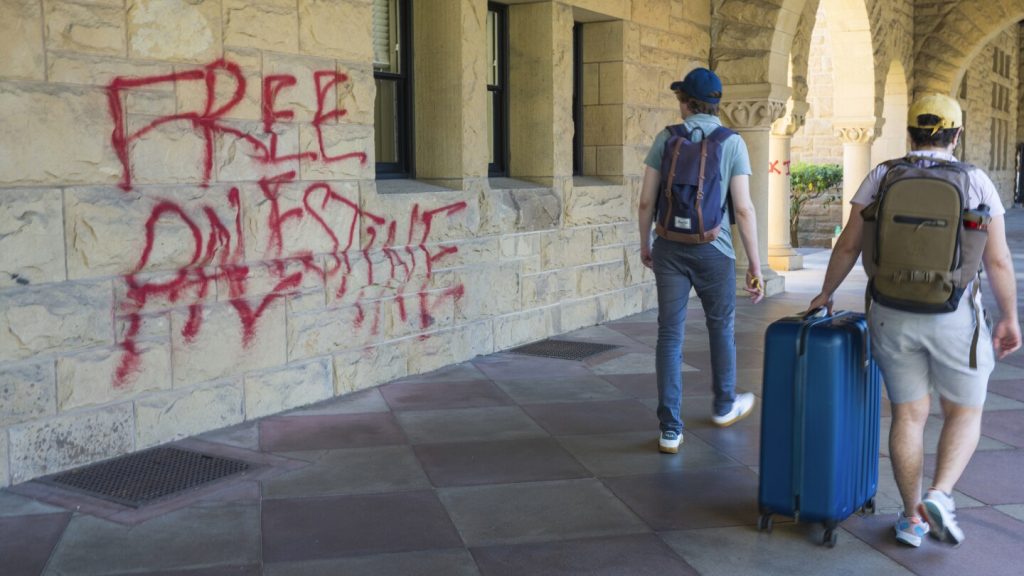Police arrested 13 people at Stanford University after pro-Palestinian demonstrators occupied the school president and provost’s offices, causing extensive vandalism inside and outside the building. The takeover occurred on the last day of spring classes, with protesters chanting “Palestine will be free, we will free Palestine.” The demonstrators’ actions led to immediate suspension for participating Stanford students, and any seniors would not be allowed to graduate. The university also removed a student encampment of Palestinian supporters, citing public safety concerns and violations of school policies.
Protest camps have been appearing on university campuses in the U.S. and Europe as students demand their universities stop doing business with Israel or companies that support its war efforts. The organizers are seeking to draw attention to end Israel’s war against Hamas in Gaza, which they describe as a genocide against the Palestinians. This has sparked a debate as the top United Nations court has acknowledged a “plausible risk of genocide” in Gaza, a charge Israel strongly denies. The incidents at Stanford are part of a larger trend of campus protests related to the Israeli-Palestinian conflict.
One law enforcement officer was lightly injured during the Stanford protest when he was shoved by protesters interfering with a transport vehicle. The situation escalated as protesters engaged in vandalism both inside and outside the building, including extensive graffiti on the sandstone buildings and columns of the Main Quad. Despite the damage caused, campus activities were not significantly affected. The president and provost of the university condemned the graffiti, calling it vile and hateful, and expressed uncertainty about the identities of the individuals responsible.
Sarah Lebaron, a Stanford physics student, expressed skepticism about the effectiveness of Wednesday’s demonstration and graffiti as a protest method. She stated that the goal of the protesters was to have Stanford divest from Israel, but questioned how these actions would lead to achieving that goal. The dissenting opinions within the Stanford community reflect the complex nature of the Israeli-Palestinian conflict and the varying perspectives on how best to address it. The incident at Stanford University is part of a larger conversation about activism, protest tactics, and the role of universities in global conflicts.
The Stanford demonstration is one of several campus protests that have taken place across the U.S. since April, with arrests being made at numerous universities. This includes incidents at Columbia University, where additional steps were taken to address student security concerns following protests earlier in the spring. The growing international criticism against Israel for its actions in Gaza, which have resulted in significant civilian casualties, has also contributed to the heightened tensions. The figures of arrests and protests on campuses across the country highlight the deep divisions and passionate activism surrounding the Israeli-Palestinian conflict.
The actions taken by pro-Palestinian demonstrators at Stanford University have sparked debates about freedom of expression, safety on campus, and the efficacy of protest methods. The incidents have brought attention to the ongoing conflict in Gaza and the differing perspectives within university communities on how to address it. The repercussions for the arrested students and the university’s response to the protests reflect the complexities of navigating contentious global issues within academic settings. As the Israeli-Palestinian conflict continues to elicit passionate responses worldwide, universities are grappling with how to balance students’ right to protest with maintaining a safe and inclusive campus environment.


